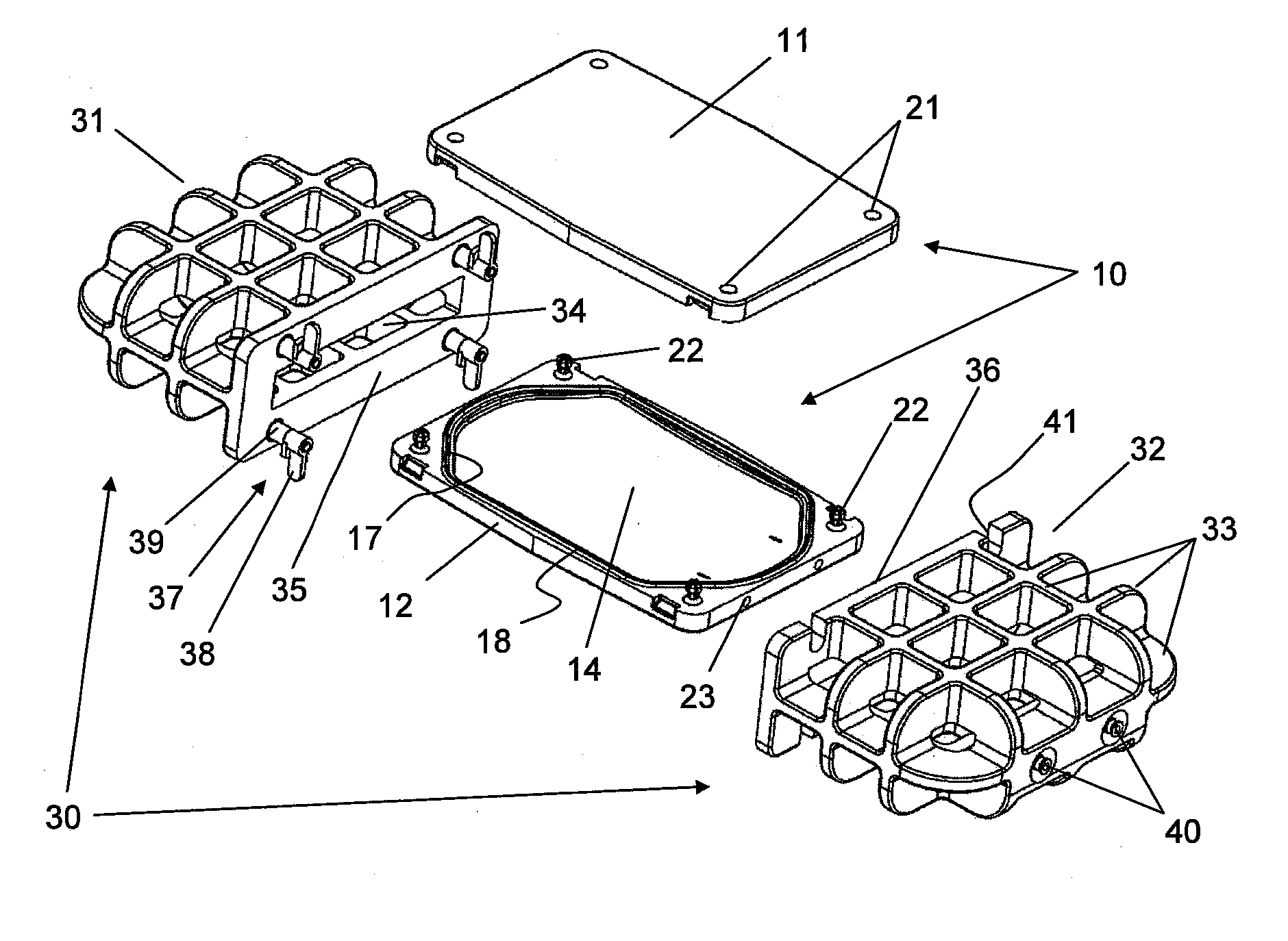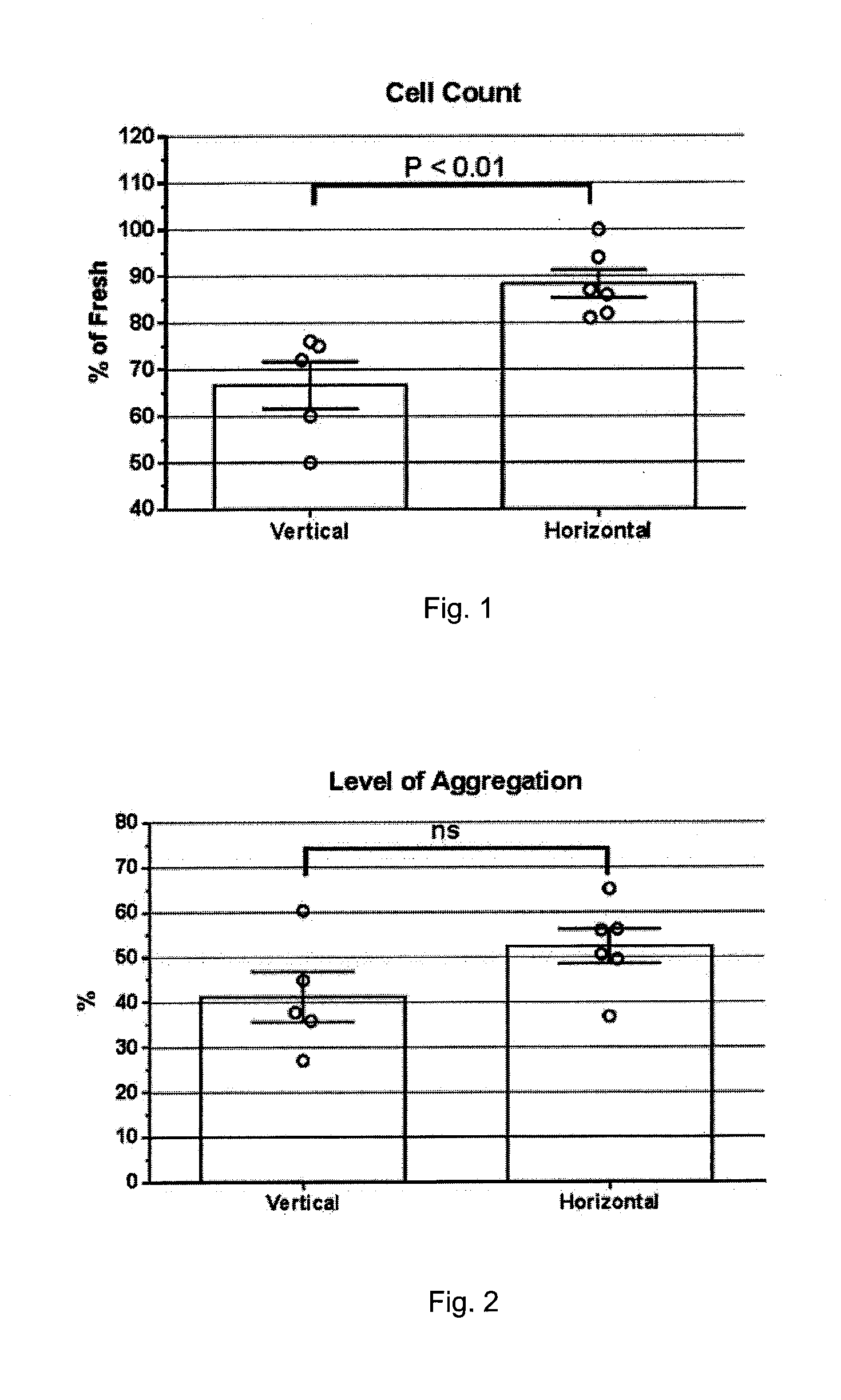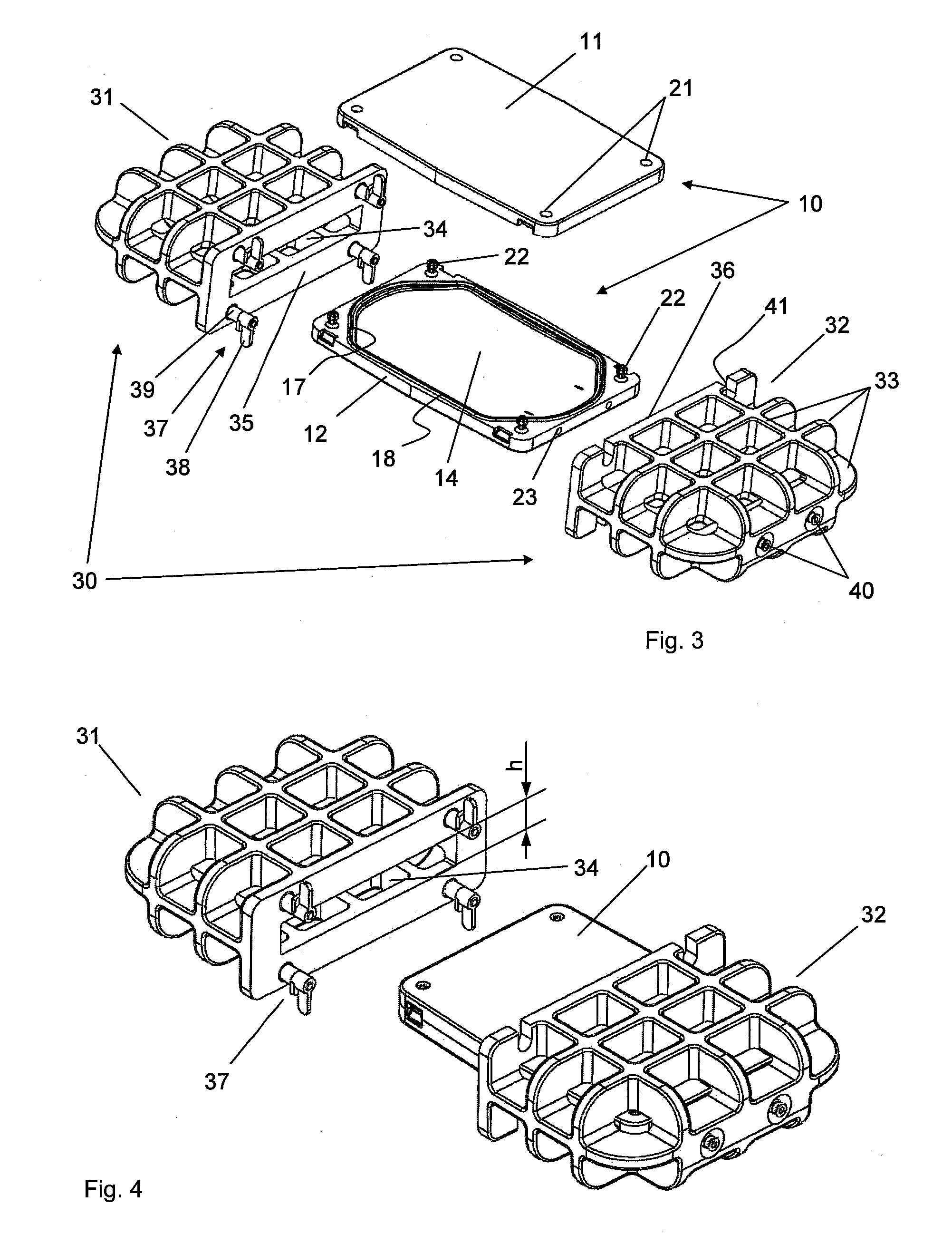Platelet Concentrate Preservation Method
a platelet concentrate and concentrate technology, applied in the field of platelet concentrate preservation method, can solve the problems of increasing the cost of bags, limiting the duration of platelet plasma storage, and not allowing the seams of such standard bags
- Summary
- Abstract
- Description
- Claims
- Application Information
AI Technical Summary
Benefits of technology
Problems solved by technology
Method used
Image
Examples
experiment 1
[0111]The platelet concentrate was placed into plastic bags intended for platelet concentrate storage. The bag with platelet concentrate was placed in the above-described device (see FIGS. 3-12), into which a gas mixture containing 87% xenon and 13% oxygen was pumped under pressure into cavity 15. After keeping the platelet concentrate preservation device a period of 3.5 hours at room temperature (e.g., 22° C.), the platelet concentrate preservation device was placed in a refrigerator (temperature of approximately 4° C.). The platelet concentrate was stored for a period of 14 days.
[0112]The platelet concentrate was obtained by the standard method used in clinics—by means of an aphaeresis apparatus, Trima Accel®, with the use of standard bags having gas-permeable walls for platelet concentrate storage. These bags were available from CardianBCT (Lakewood, Colo.). The parameters for obtaining the platelet concentrate were as follows:
[0113]a. relationship of blood to anticoagulant when ...
PUM
 Login to View More
Login to View More Abstract
Description
Claims
Application Information
 Login to View More
Login to View More - R&D
- Intellectual Property
- Life Sciences
- Materials
- Tech Scout
- Unparalleled Data Quality
- Higher Quality Content
- 60% Fewer Hallucinations
Browse by: Latest US Patents, China's latest patents, Technical Efficacy Thesaurus, Application Domain, Technology Topic, Popular Technical Reports.
© 2025 PatSnap. All rights reserved.Legal|Privacy policy|Modern Slavery Act Transparency Statement|Sitemap|About US| Contact US: help@patsnap.com



